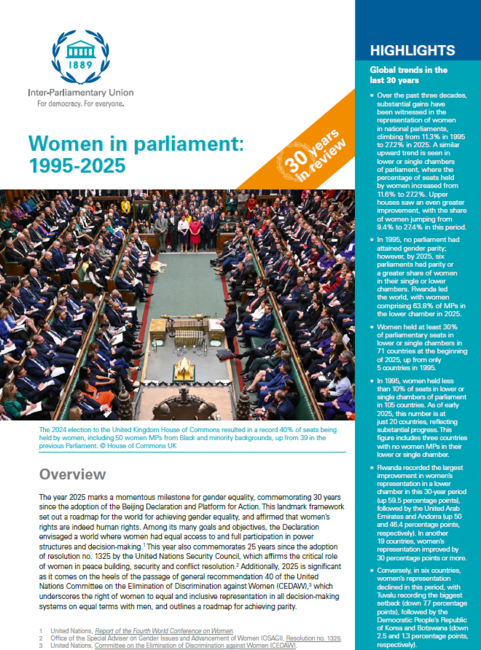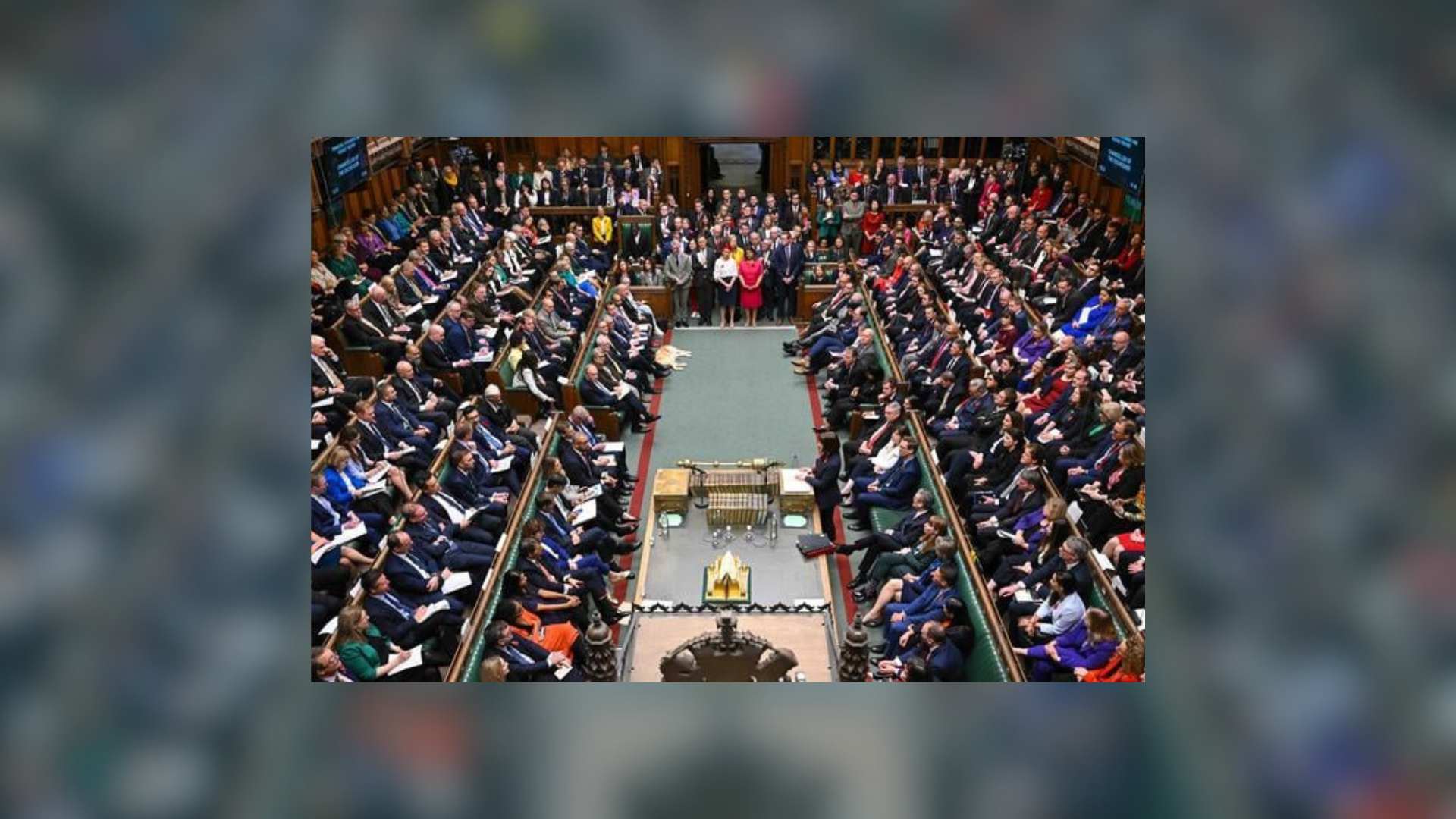Inter-Parliamentary Union, March 2025
A new Inter-Parliamentary Union report analysing three decades of women in national parliaments reveals that the percentage of seats held by women has risen from 11.3% in 1995 to 27.2% in 2025.
The IPU report Women in parliament 1995-2025 commemorates 30 years since the 1995 Beijing Declaration and Platform for Action, the landmark UN framework which set out a roadmap for gender equality and women’s rights.
2025 follows the year touted as the global “super year” of elections, during which 59 countries held parliamentary polls for 73 chambers.
But despite the momentous occasion, the year saw bare minimum progress. Women’s parliamentary representation increased by only 0.3 percentage points, marking the slowest rate of progress since 2017.
Among the report’s findings:
- The Australian Parliament has seen the biggest gain in women’s representation in the Pacific region over the past 30 years. The country has also been leading the way on addressing gender-based violence against women in parliament
- In 1995, no parliament had attained gender parity. By 2025, six parliaments had parity or a greater share of women in their single or lower chambers. Rwanda led the world, with women comprising 63.8% of MPs in the lower chamber in 2025.
- In countries with gender quotas in place, the proportion of women elected or appointed was 31.2% in 2024 compared to 16.8% in countries without.

Download the report







